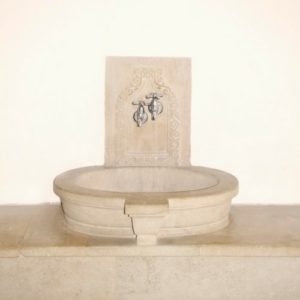Under ordinary circumstances, people don’t stop and give a good long think to the indoor plumbing that runs throughout a home. In truth, part of that is a deliberate design decision.
Indoor plumbing of today should not call attention to itself; it should just work when it needs to. But that network of pipes, pumps, heaters, tanks, and filters that are built to be ignored is the result of thousands of years of engineering effort.
The march towards easy access to water in every home was not always a matter of simple convenience. Our indoor plumbing advances are due to many years of back and forth experimentation.
The Struggle for Growth
 It’s hard now to think of water as a precious resource, but without it, people can’t survive. This was the brutal lesson the ancient Egyptians learned, living in a desert region where only one reliable source of water existed; the Nile River.
It’s hard now to think of water as a precious resource, but without it, people can’t survive. This was the brutal lesson the ancient Egyptians learned, living in a desert region where only one reliable source of water existed; the Nile River.
In order to free themselves from clinging around the river shore, the Egyptians learned how to make clay pipes to carry water further inland. Eventually, their skill in metallurgy led to the creation of copper pipes, a material still in use in some pipes even today.
Centuries later, the Romans took the next big step, both in scale and design. The aqueducts were an order of magnitude more ambitious than the pipes of the Egyptians, carrying huge amounts of water out to Roman towns and cities.
However, once it got to those settlements, the aqueducts would branch off, and some individual homes got water directly inside for the first attempt at indoor plumbing. They even pioneered sewage techniques, hollowing logs made of elm to carry off waste and keep their towns and cities cleaner.
France Falls Back
 This is why it’s all the more surprising that by the time the 18th century arrived, even people at the top of the pyramid, like Marie Antoinette and the rest of French royalty lived in worse water conditions than the Romans or Egyptians did. In fact, Marie Antoinette’s famous use of perfumes was to hide both her stink and that of the French royal court.
This is why it’s all the more surprising that by the time the 18th century arrived, even people at the top of the pyramid, like Marie Antoinette and the rest of French royalty lived in worse water conditions than the Romans or Egyptians did. In fact, Marie Antoinette’s famous use of perfumes was to hide both her stink and that of the French royal court.
French palaces were built at locations chosen more for their breathtaking vistas than logistical functionality. It meant that royals, supposedly living at the height of luxury, had no indoor plumbing, and no easy access to large amounts of water, so they usually bathed only once a month.
More alarmingly, however, this also meant no sewage systems of any kind in place. So royal palaces had beautiful rugs, thrones and elegant galleries that were pooled with urine, or even had solid human waste lining corridors, sitting on rugs, and even piling up in royal chambers, because it was incredibly difficult to keep up with the accumulation of waste from all those people.
Plumbing Today
 Luckily, in the 21st century, the average American doesn’t have to worry about living the stinky life of 18th-century French royalty. People can take showers or baths anytime they like, every day.
Luckily, in the 21st century, the average American doesn’t have to worry about living the stinky life of 18th-century French royalty. People can take showers or baths anytime they like, every day.
Toilets let entire cities enjoy safe, sanitary sewage control without exposing anyone to contaminants or other bacterial risks. Even in the event that something goes wrong, both homeowners and businesses are covered.
Companies such as Hull Plumbing are prepared to help anyone in Oklahoma City, OK that needs it. So when there’s a problem, there’s no need to panic, there are experienced professionals ready to respond quickly and restore easy, reliable access to water and sewage management.
The post Valuable Info About the History of Indoor Plumbing You Should Know appeared first on Hull Plumbing.

